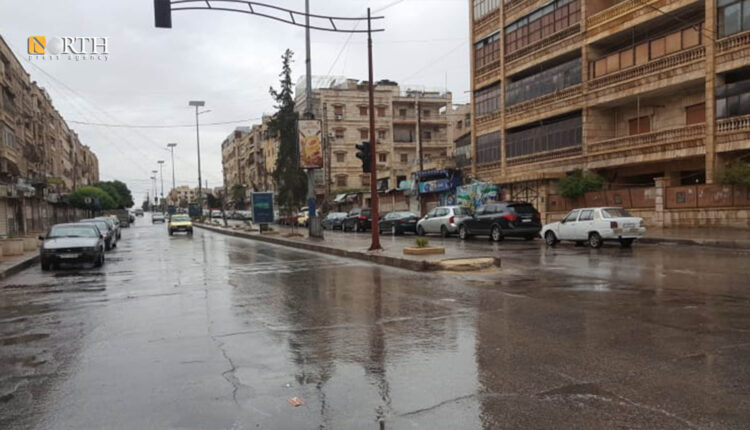Syria facing harsh winter with first polar low-pressure system
DAMASCUS, Syria (North Press) – A Syrian meteorologist has predicted that the country would witness the first polar low-pressure system this season, which will arrive on Sunday.
The system will bring along a serious drop in temperatures, an intensified wave of cold weather, and heavy rainfall throughout next week.
In a statement to the government-run Sham FM radio station, he said that the cold front will start affecting Syria this Sunday. With the cold, an increase in wind speed is expected to range as high as 85 km per hour. This strong wind could exacerbate the cold conditions-especially in open areas.
It will hence be colder than average, dipping by 5-8 degrees Celsius below the normal seasonal levels. This chill may persist through the week, at which point temperatures will only just have begun to rise to the end of the week.
The heaviest rainfall is expected to hit coastal, northern, and northeastern regions of Syria, with the majority of it coming on Sunday. The meteorologist issued a warning that there was a chance of flash flooding in areas due to how heavy the rainfall can be and not allow the drainage systems to cope with.
Heavy showers may cause limited local flooding, especially in areas already experiencing significant rains throughout the preceding weeks.
In the coastal areas, this may result in cities like Latakia and Tartus receiving continuous rainfall; northeastern areas could also see rain throughout the Hasakah and Raqqa provinces that might cause an increase in river levels. The emergency services have been warned to be ready for possible flooding, and authorities are monitoring the riverbanks closely.
With Syria still trying to recover from several years of conflict, the arriving weather could make stabilization efforts even more complex. The storm is forecasted to affect neighboring Lebanon and parts of Jordan, which can expect similar weather.
This weather event signals the start of winter in Syria, which usually sees cold and wet conditions during these months, although such severe cold fronts are more infrequent. The forecasted storm is predicted to bring the first real test this season for infrastructure in the region: from handling heavy rainfall to freezing temperatures.
Residents are advised to take precautions against the cold in areas most likely to be flooded; people in mountainous and rural areas should also be aware that snowfall is possible at higher altitudes, but this again is unlikely to occur on the lowlands with this particular weather system.
Further updates will be provided by meteorological authorities as the system develops. In the meantime, citizens have been advised to take notice and follow safety guidelines to avoid disruptions and damages that might be caused by the weather.

